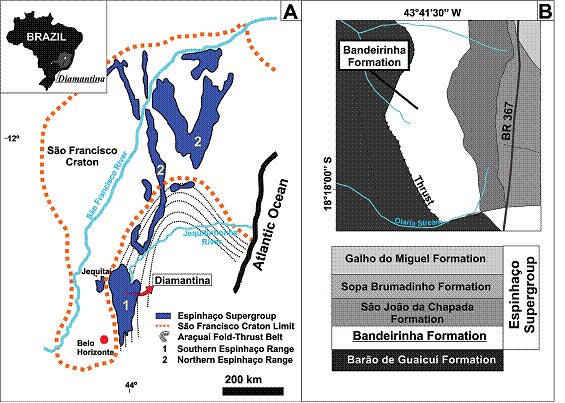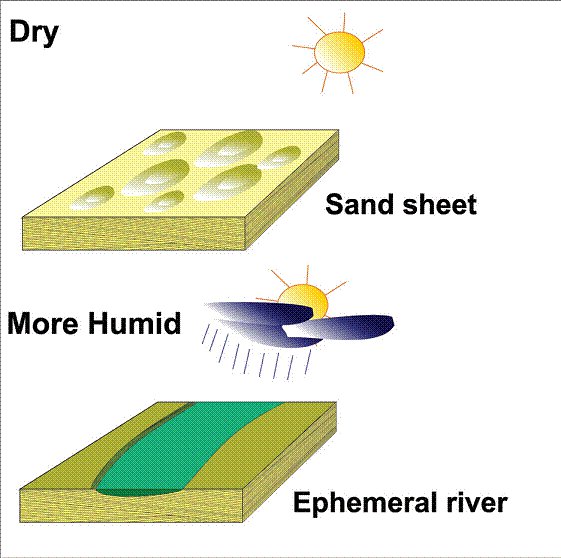ABSTRACT
Some present-day eolian sand sheets have small and width dunes, called zibars, as common type of depositional morphology. Their formation is related to different stabilizing factors, which reduce the availability of clastic materials for eolian processes. In fact, zibars are dunes which do not have time to develop a larger dune with slipface (proto-dune). Dunes in sands sheet areas generally are constructed by wind ripple laminations and commonly generate sedimentary succession less than 20 m thick, which are the consequence of low sand supply. This study deals with an uncommon eolian sand sheet sedimentary succession more than 50 m thick, Proterozoic in age, known as Bandeirinha Formation. This paper tries to explain the anomalous thick of this sand sheet sedimentary succession. High thickness was probably the result of a high input of sand material, combine with low availability of sand, thus allowing the only construction of proto-dunes (zibars). Early cementation, due to near-surface evaporation of saline water, has been proposed as main factor that reduced the sand availability into this eolian system. Finally, the subsidence processes related to the first stage of rift Espinhaço Basin must have generated the accommodation space to preserve the sand sheet succession.
KEYWORDS:
Eolian sand sheet; zibar; ephemeral channel rivers; Bandeirinha Formation; Paleoproterozoic.

 Thumbnail
Thumbnail
 Thumbnail
Thumbnail
 Thumbnail
Thumbnail
 Thumbnail
Thumbnail
 Thumbnail
Thumbnail





